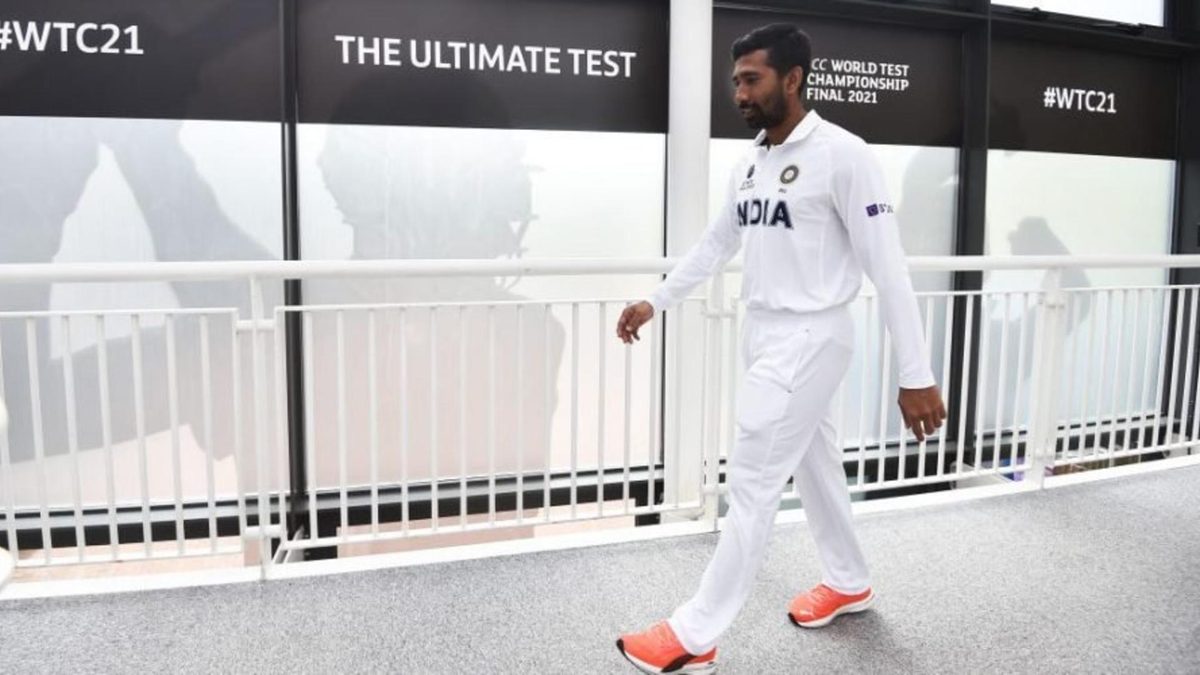
Wriddhiman Saha did little wrong on the wicketkeeping front, but in a team as quickly evolving as India he’s been left behind due to his mediocre batting returns. Saha’s time was already ticking; Rishabh Pant’s meteoric rise merely hastened it.
Subscribe to the Wisden Cricket YouTube channel for post-match awards, player interviews, analysis and much more.
Not too long ago, Wriddhiman Saha looked safe in India’s Test wicketkeeping spot. In October 2019, skipper Virat Kohli called him the best wicketkeeper in the world, while coach Ravi Shastri added that Saha’s keeping was invaluable to India. His stunning performance in India’s first pink-ball Test gave credence to those statements. There wasn’t much competition.
Eleven Tests later, Saha is sitting on the sidelines, possibly staring at the end of his international road despite being in the squad to take on England. There’s no coming back as first-choice, for Rishabh Pant has emphatically secured that position. Even until the beginning of the Australia tour last December, Saha was the preferred man, earning the spot ahead of Pant for the first Test. Then Adelaide happened and India finally realised they needed a change.
Pant’s spectacular rise earned him a place in India’s playing XI, but that isn’t the only reason why Saha suffered a demotion. Despite his near-perfect skills behind the sticks, Saha had turned agonisingly out-of-form in front of them. Now it’s probably unfair to judge a wicketkeeper purely on the basis of their batting statistics, more so if you have a gloveman as wonderful as Saha. But for a team rapidly evolving the way it did, Saha’s old-fashioned ways became redundant.
Since his Ranchi hundred against Australia in 2017, Saha has passed the 30-run mark only twice in 16 innings. Among wicketkeepers with five-plus Test appearances since the start of 2018, Saha’s average is the lowest (13.57). When the top order collapsed, putting further onus on the middle order, Saha rarely stood up. Among the 10 India players who have batted between five and eight since the start of 2018 (five-plus innings), Saha’s average is the second-lowest after Dinesh Karthik.
Injuries played a part in keeping him away for odd stretches, but the dwindling returns did put a considerable load on batsmen around him. Saha had proved his batting mettle in the past – be it a doughty 106-ball 32 against South Africa in 2015 or a crucial 106 in Gros Islet the following year – but that was long ago.
Furthermore, the divide between Saha and Pant’s wicketkeeping, initially evident in the early stages of Pant’s career, seems to be narrowing. When Pant was still finding his feet, Saha remained exemplary in reading late swing and standing up to spinners on raging turners. However, their catch success rates in Test cricket over the previous three years were recorded to be the same by the closing stages of 2020.
Saha is a fine athlete who has given few reasons to complain on the keeping front, but in the wicketkeeper v wicketkeeper-batsman debate, there came a time when his artistry with the gloves just wasn’t enough. At 36, Saha stands at a sticky juncture, as does the Indian management. Will he continue to serve as the backup to Pant, much like he did to MS Dhoni a decade ago? Is there not merit to looking to the future and honing a younger option instead?
Through the years, Saha has remained a respected member of India’s Test team, earning plaudits as a selfless team man who moved out of MS Dhoni’s shadow only after he turned 30, but still played a pivotal part in India’s ascent to the top. In an aggressive, rapidly advancing setup though, Saha’s middling returns added up to a worrisome number, and just glovework wasn’t enough for him to save his place. The Pant storm showed us the way ahead, and it’s probably where Indian cricket has to go next.








